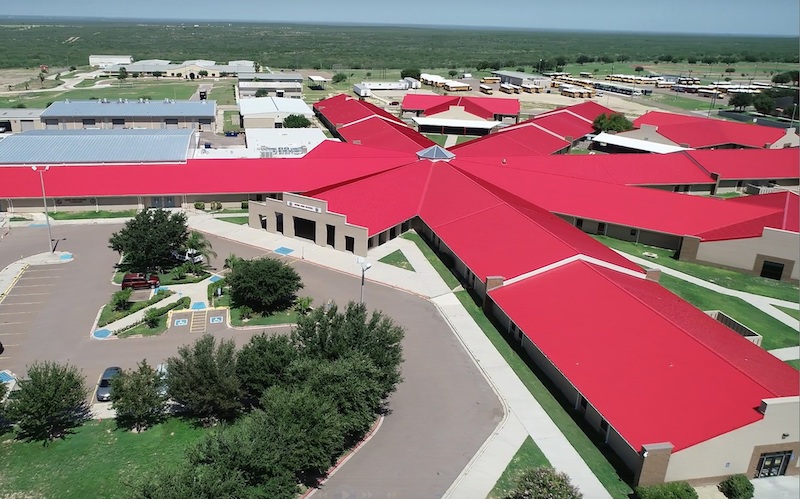1. Lighting for rehearsal space
USAI Lighting
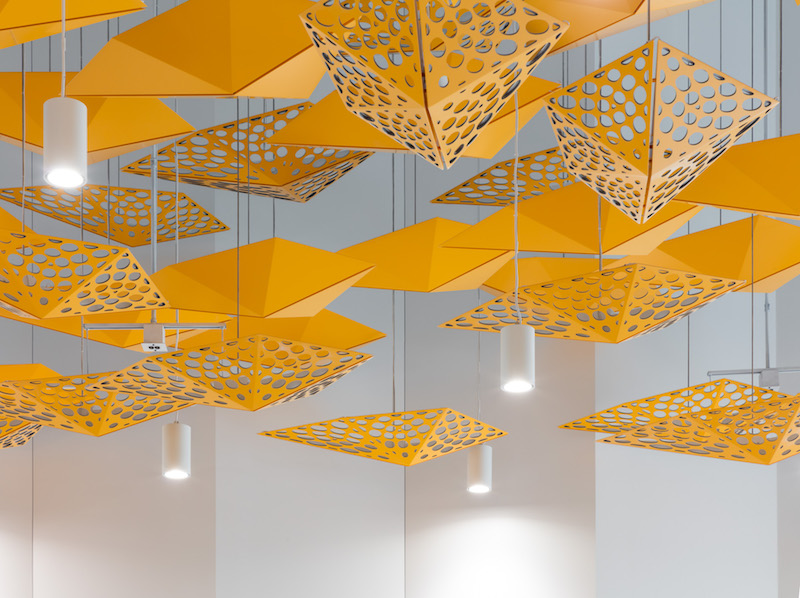
Project: Voxman Music Building, University of Iowa, Iowa City. Problem: A 2008 flood ruined the Voxman Music Building, causing the university to rebuild and relocate the facility. The new space required functional, well-lit performance and rehearsal spaces. Solution: USAI Lighting’s BeveLED 2.1 Classic White fixtures were incorporated into rehearsal spaces due to their high intensity and ability to withstand the constant and intense sound waves produced by the instruments. On the team: HLB LA (lighting designer).
2. Nature-inspired, sculptural ceiling
Pinta Acoustics
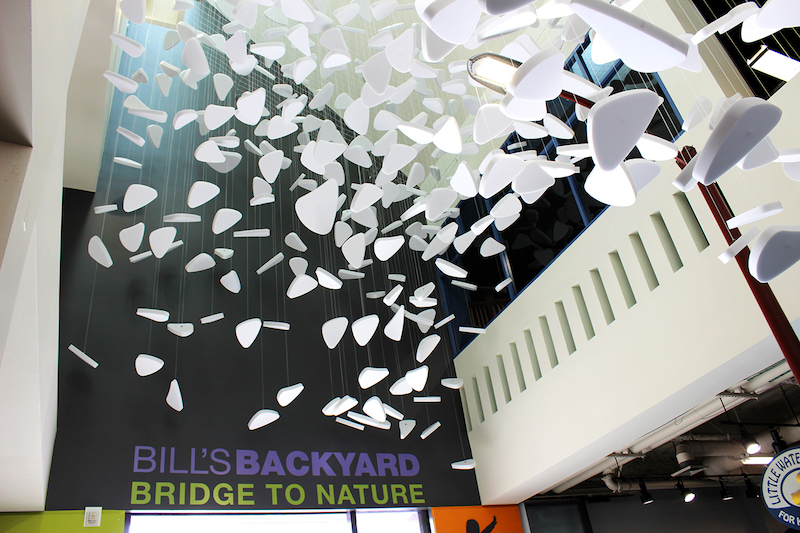
Project: Children’s Discovery Museum of San Jose, Calif. Problem: For the museum’s newly renovated circulation area, the design team wanted to create a dramatic, nature-inspired sculpture to signify the transition from the main museum to the outdoor nature exploration area, Bill’s Backyard. Solution: Pinta Acoustics’ WILLTEC foam material was used to create custom abstract butterfly shapes that provide acoustical control and create movement in the circulation area. The flat sheets are available in various shapes and sizes up to 48x96 inches, and thicknesses up to four inches. On the team: Modulus (architect).
3. Veiled metal panels
Centria
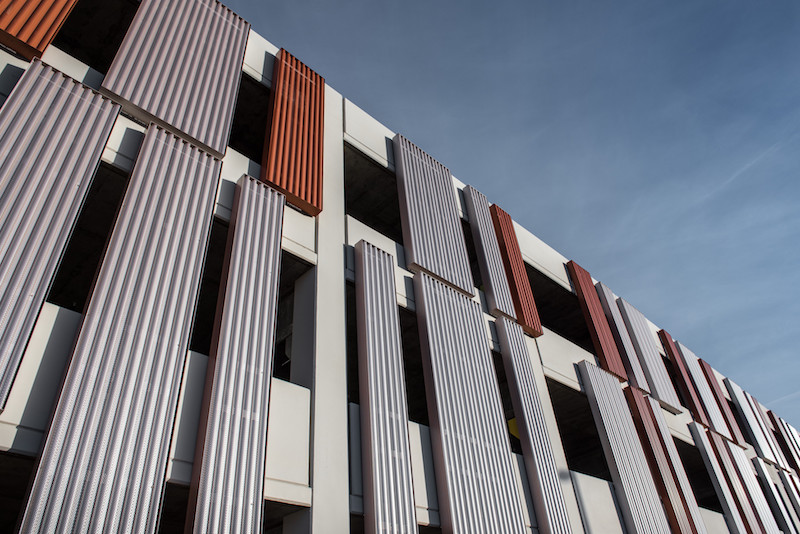
Project: Broadcom Parking Garage, Moon Township, Pa. Problem: The renovation of the existing structure needed a product to make it appear more open and interact better with its surroundings. Solution: Centria provided 20,050 sf of EcoScreen Cascade perforated metal panels in Champagne Pearl and Clay. The metallic veil of perforated metal allowed the project team to screen car headlights from users and neighbors while allowing daylight and ventilation to flow through. On the team: HOK (architect) and Devcon Construction (GC).
4. High-performance sunshades
Mermet
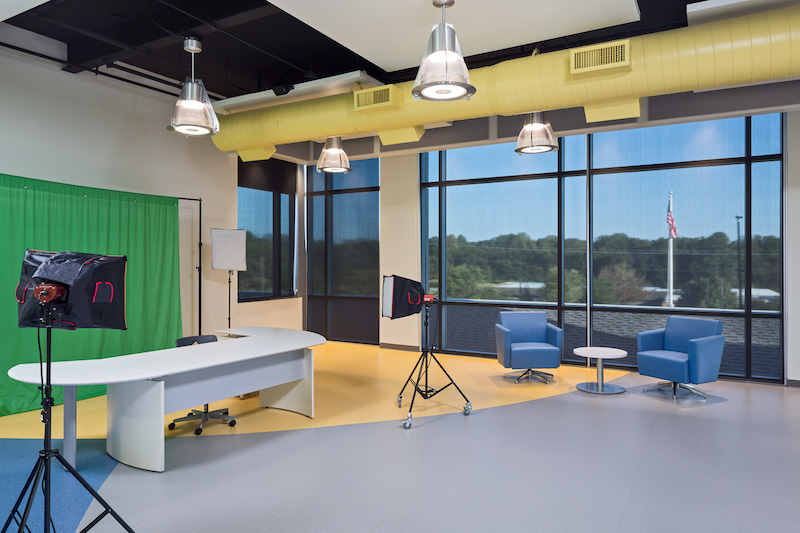
Project: Drayton Mills Elementary School, Spartanburg, S.C. Problem: Natural light and views improve student performance, but there are times in a school setting when light is not desired. Solution: The school features Mermet’s E Screen in 3% openness and Avila Twilight 100% blackout fabrics in charcoal. The dark fabrics were chosen to blend with the inherent color of the SunGuard coated glass that was used to minimize the appearance of the shades from the exterior. The sunshades combined with the glass maximize thermal control. On the team: McMillan Pazdan Smith (architect) and Draper Inc. (fabricator).
5. Symmetrical standing seam panels
McElroy
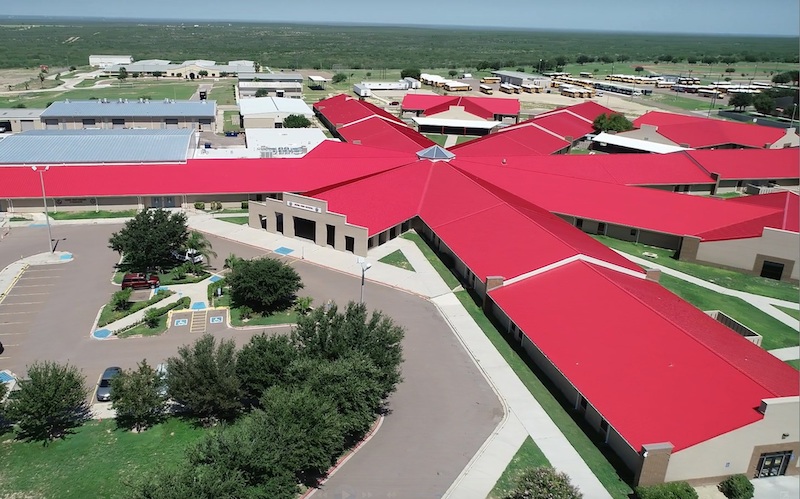
Project: Roma High School, Roma, Texas. Problem: The school had issues with roof leaks at various transition points that were causing excessive damage. Solution: The original leaky tile roof was removed and replaced with McElroy’s 138T symmetrical standing seam metal roofing. The system was also used to re-cover an existing roof. The symmetrical nature of the panels allowed for the installation to begin anywhere on the roof. On the team: Amtech (design and restoration consulting firm) and Rio Roofing (onsite roll forming).
6. Continuous wall insulation
Atlas Roofing
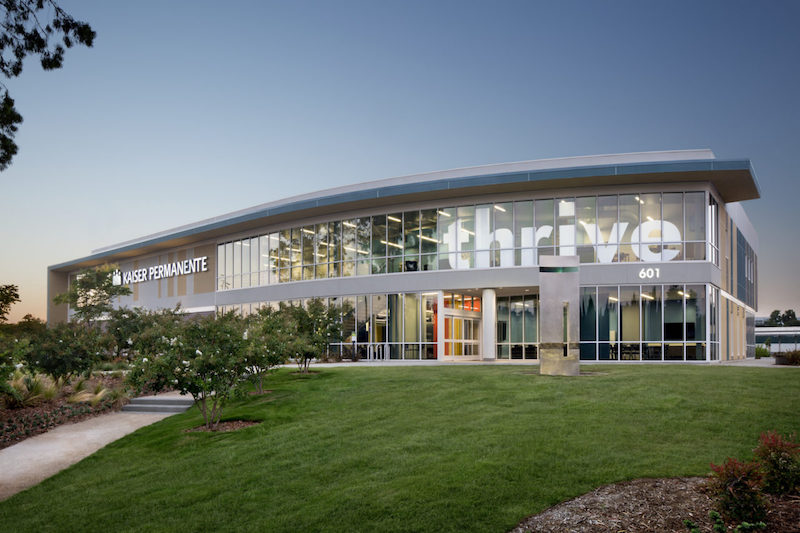
Project: Kaiser Permanente Medical Building, La Habra, Calif. Problem: The newly constructed 28,000-sf building features 25 exam rooms and 16 physician offices that required the maximization of occupant comfort and energy efficiency while maintaining compliance with environmental regulations. Solution: HMC Architects specified Atlas EnergyShield Pro continuous wall insulation in tandem with the patented Diamond Furr TT-4 lath attachment system by Brand X Metals. According to Atlas, EnergyShield Pro provides the highest R-value per inch of any insulation and resists water, air, and vapor penetration. It offers zero ozone depletion potential and zero global warming potential. On the team: HMC Architects (architect) and Swinerton Builders (GC).
Related Stories
| Aug 11, 2010
Seven tips for specifying and designing with insulated metal wall panels
Insulated metal panels, or IMPs, have been a popular exterior wall cladding choice for more than 30 years. These sandwich panels are composed of liquid insulating foam, such as polyurethane, injected between two aluminum or steel metal face panels to form a solid, monolithic unit. The result is a lightweight, highly insulated (R-14 to R-30, depending on the thickness of the panel) exterior clad...
| Aug 11, 2010
Nurturing the Community
The best seat in the house at the new Seahawks Stadium in Seattle isn't on the 50-yard line. It's in the southeast corner, at the very top of the upper bowl. "From there you have a corner-to-corner view of the field and an inspiring grasp of the surrounding city," says Kelly Kerns, project leader with architect/engineer Ellerbe Becket, Kansas City, Mo.
| Aug 11, 2010
AIA Course: Historic Masonry — Restoration and Renovation
Historic restoration and preservation efforts are accelerating throughout the U.S., thanks in part to available tax credits, awards programs, and green building trends. While these projects entail many different building components and systems, façade restoration—as the public face of these older structures—is a key focus. Earn 1.0 AIA learning unit by taking this free course from Building Design+Construction.
| Aug 11, 2010
AIA Course: Enclosure strategies for better buildings
Sustainability and energy efficiency depend not only on the overall design but also on the building's enclosure system. Whether it's via better air-infiltration control, thermal insulation, and moisture control, or more advanced strategies such as active façades with automated shading and venting or novel enclosure types such as double walls, Building Teams are delivering more efficient, better performing, and healthier building enclosures.
| Aug 11, 2010
Glass Wall Systems Open Up Closed Spaces
Sectioning off large open spaces without making everything feel closed off was the challenge faced by two very different projects—one an upscale food market in Napa Valley, the other a corporate office in Southern California. Movable glass wall systems proved to be the solution in both projects.
| Aug 11, 2010
AIA course: MEP Technologies For Eco-Effective Buildings
Sustainable building trends are gaining steam, even in the current economic downturn. More than five billion square feet of commercial space has either been certified by the U.S. Green Building Council under its Leadership in Energy and Environmental Design program or is registered with LEED. It is projected that the green building market's dollar value could more than double by 2013, to as muc...
| Aug 11, 2010
BIM adoption tops 80% among the nation's largest AEC firms, according to BD+C's Giants 300 survey
The nation's largest architecture, engineering, and construction companies are on the BIM bandwagon in a big way, according to Building Design+Construction's premier Top 50 BIM Adopters ranking, published as part of the 2009 Giants 300 survey. Of the 320 AEC firms that participated in Giants survey, 83% report having at least one BIM seat license in house, half have more than 30 seats, and near...
| Aug 11, 2010
Thrown For a Loop in China
While the Bird's Nest and Water Cube captured all the TV coverage during the Beijing Olympics in August, the Rem Koolhaas-designed CCTV Headquarters in Beijing—known as the “Drunken Towers” or “Big Shorts,” for its unusual shape—is certain to steal the show when it opens next year.
| Aug 11, 2010
Tall ICF Walls: 9 Building Tips from the Experts
Insulating concrete forms have a long history of success in low-rise buildings, but now Building Teams are specifying ICFs for mid- and high-rise structures—more than 100 feet. ICF walls can be used for tall unsupported walls (for, say, movie theaters and big-box stores) and for multistory, load-bearing walls (for hotels, multifamily residential buildings, and student residence halls).
| Aug 11, 2010
Financial Wizardry Builds a Community
At 69 square miles, Vineland is New Jersey's largest city, at least in geographic area, and it has a rich history. It was established in 1861 as a planned community (well before there were such things) by the utopian Charles Landis. It was in Vineland that Dr. Thomas Welch found a way to preserve grape juice without fermenting it, creating a wine substitute for church use (the town was dry).


